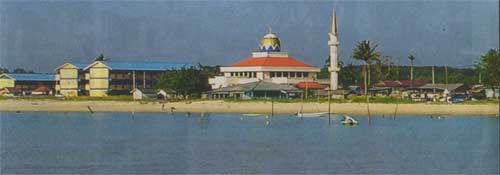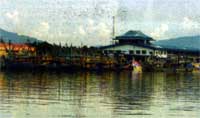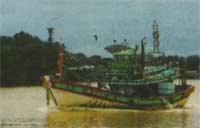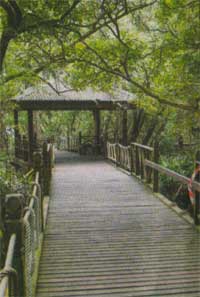 Cruising on the Kuantan river
Cruising on the Kuantan river

|
|
| Home > Malaysia > Pahang > Kuantan > Kuatan River | |
|
To see how important the Kuantan River is, take a ferry cruise that will take you on an adventure of the refreshing kind, writes F.K. Kok The recent month Iong National Water FestivaI 2006 was aptly launched at the Kuantan Esplanade on April 2 as life on the water is a daily business for the people here . Towns like Kelantan began as a river settlement because rivers were the main transportation artery into the interior and their many estuaries provided a safe haven for seafarers and fishermen. To best get an idea of what Kuantan was like in the early days, go on a river cruise aboard the ferry service which takes visitors along the Kuantan River. The trip is a refreshing change from the hustle and bustle of the city and offers a different perspective of the town.
A picturesque view of the Esplanade, peaceful fishing villages, a 500 year old mangrove forest and a legacy of the Japanese Occupation are some of the highlights of the cruise. It starts at the Shahbandar jetty and heads for the Tanjung Lumpur fishing village located at the mouth of Kuantan River . Fishing and passenger boats are moored along Me beach or going somewhere. Those with a Iseen eye will notice the different colour schernes of the boats. Brats registered in Pahang have cabins painted yellow and bear registration numbers starting with the alphabet 'P'. Those hearing 'J', 'T' and V are registered in Johor, Terengganu and Kelantan and are coloured blue, green and red respectively.
The 339 hectare Mangrove Forest Reserve is a busy area. The muddy shores of sheltered coasts and river estuaries are fertile ground for the mangroves. This is home to crabs, prawns and fish as well as a rich source of fuelwood (Bruguiera and Rizophoria spp,) and mpoh palm leaves which are sought after for roofing purposes. The mangrove forests can only support hardy plants that can grow in marine clay and which have adapted to these harsh conditions by developing "breathing" roots. At Tanjung Lumpur, species like Api Api (Awcerank; Who and Avicennio marria) and Perepat (Sonneratro alba) thrive on the seaward zone where the soil is soft, loose and exposed to inter tidal conditions. They have developed snorkel-style roots that stick out of the soil to obtain water and oxygen. Further inland at Perannu, the swamp can be divided into zones, each dominated by a single species of tree. Vast tracts of Bems (Bruguiera cylindrical) and Bakou Kurop (Rhizophow m ucronato) thrive. This is theland of mangroves, striking back with their aerial roots through which water is absorbed via osmosis from the substrate. In the back zone of compact, clayey crab mounds grow Sebuta (Exciaecaro agollocho), Nyireh Bongo (Xylocapus granciturr), and Sea Olive. Away from tidal influence, Noah swampl forests and clumps of Nibong (Oncosperesa tigillorium) grow on the banks. Stop at Tanah Putih where the 250 metre long wooden boardwalk allows visitors to stroll through the - mangrove forest and get close looks at the flora and fauna including crabs, monitor lizards, shore birds etc. The journey does not end here. You can take a walk back ifl time to World War 11, After the Japanese Army invaded Kuantan, they constructed two pill boxes' at the present Tariah Puih Bridge . This was a strategic location as it controlled the waterways to Sungei Lemong town (where precious tin was mined) and land routes to the South of the peninsula. One of the pill boxes still stands today, a solitary legacy of the Occupation. |
Information Search here

Custom Search
|
Power By Entertop.net


 Fishing boats moored at the Fishery Development Board (LKIM) jetty
Fishing boats moored at the Fishery Development Board (LKIM) jetty 
 The boardwalk at the Mangrove Park is the highlight of the river cruise
The boardwalk at the Mangrove Park is the highlight of the river cruise